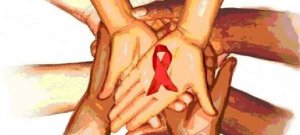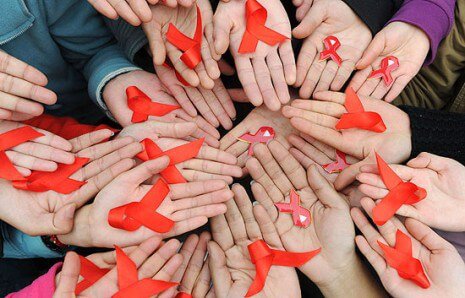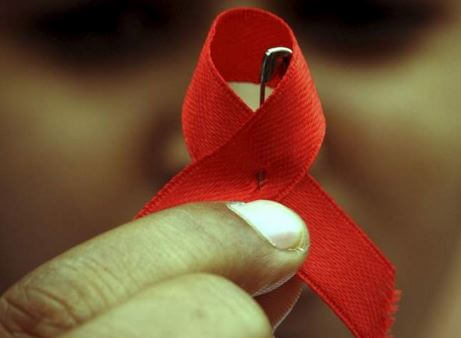AIDS Doesn't Have a Cure, but Discrimination Does

The world dedicates every first of December against Acquired Immune Deficiency Syndrome (AIDS), an illness that bears the burden of a great social stigma and about which surprisingly little is actually known.
In the Western world, fear has diminished somewhat around AIDS because, although we have to face it on a daily basis, it has become manageable through the use of medication and specific treatments.
Sadly, this has only happened in certain parts of the world. There are other places that don’t have the same luck. Therefore, every year thousands of people die from a disease that still has no cure, but does at least have a palliative treatment.

What is HIV, and what is AIDS?
To clarify these terms, we should know that the cause of AIDS is associated with a type of retrovirus that is called the human immunodeficiency virus (HIV). It has been very difficult to figure out how to treat this virus, because it has many different and ever-modifying variations. Thus, creating a vaccine that can eliminate it has been impossible thus far.
But, what does HIV do within the body when the infection begins? When HIV activates it gives way to AIDS or, the depression of our immune system. People with AIDS have a very depleted number of cells called T helper cells. This virus also increases the amount of regulatory T cells in their bodies. In a healthy person, this ratio is inverse.
The symptomatology is complex. It presents with persistent fevers and sweating throughout the night, severe fatigue, weight loss and prolonged diarrhea.

Nevertheless, we should know that someone can carry the virus and not develop AIDS. In this sense, scientists still don’t really know if the development of this disorder is inevitable or if, on the contrary, it depends on external factors that act as a promoting mechanism of this illness.
That’s why, in this sense, people infected by the virus are encouraged towards behaviors and lifestyles that facilitate the health of their immune system. Stressful moments and situations can increase the manifestation of the illness.

How do psychological factors play a role?
Currently, the psychological variables that have direct influence over the reactivation of the illness are unknown. Nevertheless, it is known that illnesses such as cancer or infectious pathologies can contribute to this.
Either way, psychological stressors such as a breakup, loss within the family or of a loved one and the development of unhealthy negative emotional variables such as depression can contribute to the development of the disease in someone carrying the virus.
This happens because negative psychological factors favor immuno-depression and, therefore, the decline of the biological protective quality of our body. Basically, HIV experiences a boost in its reproductive capabilities in the presence of steroid hormones (i.e. cortisol), which is secreted in larger amounts in times of stress.

Myths and facts about AIDS
MYTH: Mosquito bites can transmit HIV.
FACT: HIV (human immunodeficiency virus) cannot be transmitted through a mosquito bite or through the bite of any other insect. Insects cannot get infected by HIV, and therefore, cannot transmit it either.
MYTH: I can catch HIV by shaking someone’s hand, hugging someone, using a public restroom, drinking from the same glass as someone who is infected or if I am near someone who is infected when they sneeze or cough.
FACT: HIV cannot be transmitted through everyday casual contact in social or workplace environments. No one can become infected through casual contact. HIV can only be transmitted through:
- Unprotected vaginal, anal and oral sex.
- A transfusion with contaminated blood.
- By sharing contaminated needles in the medical field or between people who inject themselves with intravenous drugs.
- From a mother to her child, during the pregnancy, the birth or breastfeeding.
*The risk of contagion increases if there are wounds, cuts or ulcers and contact is established with these.
MYTH: HIV solely affects homosexuals and those who do intravenous drugs
FACT: As you have now seen, this is false. Of all of the cases of infection, 90% are the result of sexual contact without the use of protection. Even more specifically, between 60-70% of these infections are in heterosexual people, while 30-40% are in homosexual people.

MYTH: You can know someone has HIV by simply looking at them.
FACT: Not in the least. A carrier of HIV can transmit the virus to other people and appear completely healthy. The only way to know if a person is infected by the virus is through a blood test (which in turn has high reliability).
MYTH: When you are receiving antiretrorival therapy, you cannot transmit the virus to others.
FACT: Antiretroviral therapy doesn’t prevent someone who is infected from transmitting the virus. Although it can reduce the viral load enormously, which helps the patient maintain a good quality of life.
MYTH: Someone can get HIV by being in contact with the sweat of someone who is infected with HIV.
FACT: Sweat is not a route of transmission since the concentration of the virus is minimal, and additionally, it must have a means of access into the blood stream of a healthy individual.
Fighting against the stigmatization and criminalization of AIDS not only helps society and the world, it also helps each of us. In order to contribute to this process, we can start by sharing this information, promoting the facts and debunking the myths. Don’t turn your back on AIDS, fight against discrimination.
This text is provided for informational purposes only and does not replace consultation with a professional. If in doubt, consult your specialist.








